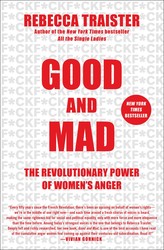November 26, 2018
Good and Mad, by Rebecca Traister
 “The ability to narratively flip the dynamics of aggression and abuse—to view the less powerful as a menace to the aggressors—has been key to how white patriarchal structures have persisted. It’s how police can systematically killed black people but when black people protest those killings with Black Lives Matter marches, those protestors can be called “terrorists” on the news, or a “hate group,” by the Republican pundit Meghan McCain. It’s why, when Baltimore resident Freddie Grey was hauled into a van by police in Baltimore in 2015 and taken on a rough ride that resulted in his death, multiple news reports asserted that the “violence started” when protestors threw rocks in protest of his killing, and now when he was murdered.
“The ability to narratively flip the dynamics of aggression and abuse—to view the less powerful as a menace to the aggressors—has been key to how white patriarchal structures have persisted. It’s how police can systematically killed black people but when black people protest those killings with Black Lives Matter marches, those protestors can be called “terrorists” on the news, or a “hate group,” by the Republican pundit Meghan McCain. It’s why, when Baltimore resident Freddie Grey was hauled into a van by police in Baltimore in 2015 and taken on a rough ride that resulted in his death, multiple news reports asserted that the “violence started” when protestors threw rocks in protest of his killing, and now when he was murdered.
The violence done by the more powerful entity—the police and the state—to the less powerful entity is often so normalized, so banal, so expected as to not even be discernible, not even visible. But angry resistance to that violence, coming from the less powerful and directed at more powerful, is automatically understood as disruptive, dangerous, electric. The upset of power dynamics creates chaos…
These structural assumptions are why calls for civility almost always redound positively to the oppressors, because incivility against the oppressed is not only so normalized, it is also so comforting that it can barely be detected as oppression; while even the most trivial challenge from the less powerful sets off alarms.”
—Rebecca Traister, Good and Mad: The Revolutionary Power of Women’s Anger





